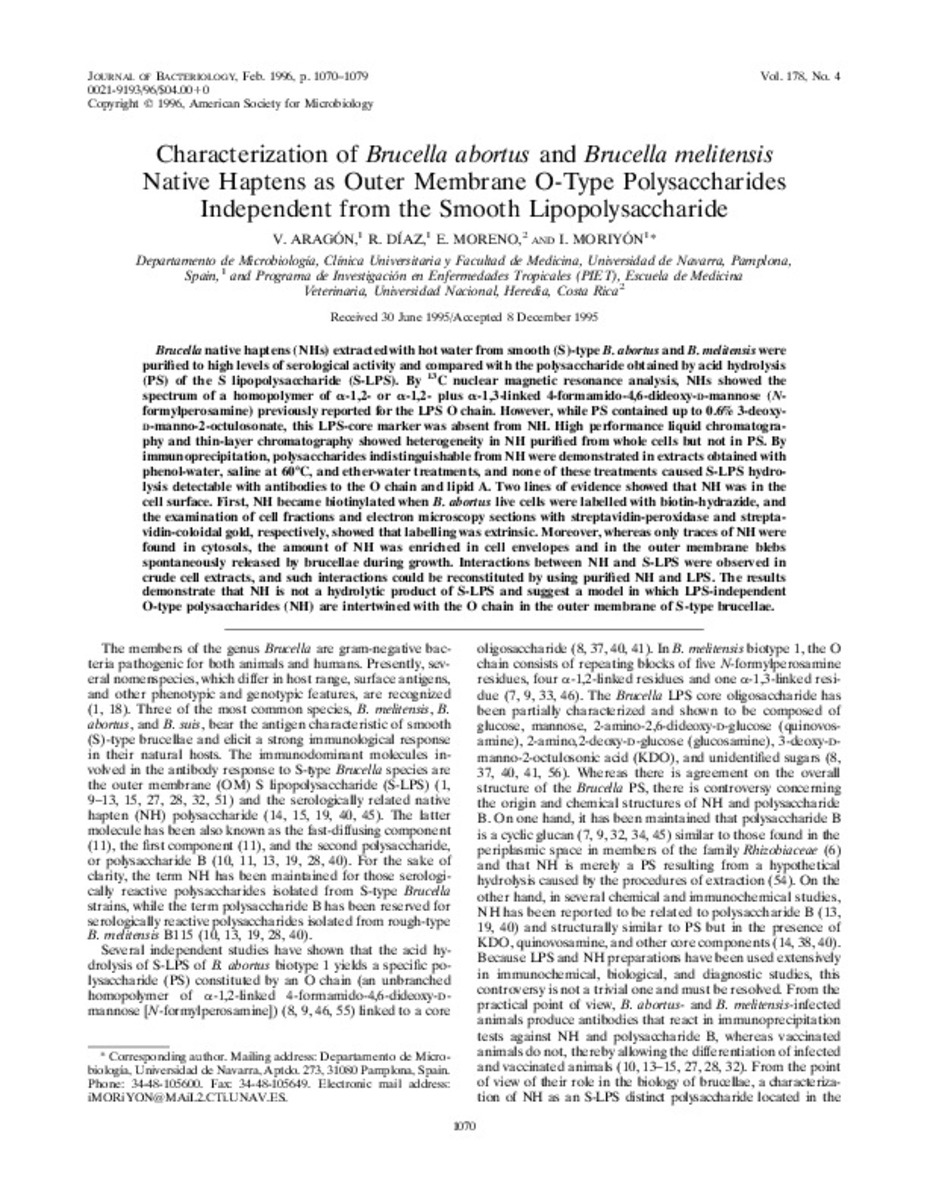Characterization of Brucella abortus and Brucella melitensis native haptens as outer membrane O-type polysaccharides independent from the smooth lipopolysaccharide
Palabras clave :
Radial immunodiffusion test
Escherichia-coli
Immunochemical characterization
Polyacrylamide gels
Bovine brucellosis
Silver stain
Antigen
Protein
Chain
Diagnosis
Fecha de publicación :
1996
Editorial :
American Society for Microbiology
Cita:
Aragon V, Diaz R, Moreno E, Moriyon I. Characterization of Brucella abortus and Brucella melitensis native haptens as outer membrane O-type polysaccharides independent from the smooth lipopolysaccharide. J Bacteriol 1996 Feb;178(4):1070-1079.
Aparece en las colecciones:
Estadísticas e impacto
0 citas en

0 citas en

Los ítems de Dadun están protegidos por copyright, con todos los derechos reservados, a menos que se indique lo contrario.







